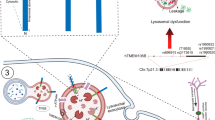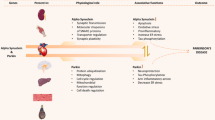Abstract
The study of protein folding is fundamental and important in the multidisciplinary field because a diversity of diseases, like Alzheimer’s and Parkinson’s are relevant to protein misfolding. The current thermodynamic and geometric approaches only phenomenologically describe but do not provide a mechanistic understanding of the competition between correct folding and misfolding. Here we present a model to understand the misfolding behavior. Considering the influence of dissipative strength for all possible sequences and comparing the folding time toward different compact structures, we obtain a phase diagram of the dissipative quantum phase transition that enables us to model the behavior. We also investigate how a perturbation in the Hamiltonian affects the transition point, which motivates us to explore possible manual interventions. Our results indicate that the manual intervention may be effective for some specific sequence but not for everyone. This approach is expected to lay a foundation for further studies on manual intervention in protein misfolding.
Similar content being viewed by others
References
R. L. Baldwin, Nature 369, 183 (1994).
D. Balchin, M. Hayer-Hartl, and F. U. Hartl, Science 353, aac4354 (2016).
C. M. Dobson, Nature 426, 884 (2003).
P. J. Thomas, B. H. Qu, and P. L. Pedersen, Trends Biochem. Sci. 20, 456 (1995).
C. M. Dobson, Trends Biochem. Sci. 24, 329 (1999).
F. Chiti, P. Webster, N. Taddei, A. Clark, M. Stefani, G. Ramponi, and C. M. Dobson, Proc. Natl. Acad. Sci. USA 96, 3590 (1999).
J. E. Shea, and C. L. Brooks III, Annu. Rev. Phys. Chem. 52, 499 (2001).
A. R. Dinner, A. Sali, L. J. Smith, C. M. Dobson, and M. Karplus, Trends Biochem. Sci. 25, 331 (2000).
A. Gershenson, L. M. Gierasch, A. Pastore, and S. E. Radford, Nat. Chem. Biol. 10, 884 (2014).
B. Bukau, and A. L. Horwich, Cell 92, 351 (1998).
C. Soto, FEBS Lett. 498, 204 (2001).
J. L. Silva, D. Foguel, and C. A. Royer, Trends Biochem. Sci. 26, 612 (2001).
A. V. Melkikh, and D. K. F. Meijer, Prog. Biophys. Mol. Biol. 132, 57 (2018).
C. M. Dobson, A. Sali, and M. Karplus, Angew. Chem. Int. Ed. 37, 868 (1998).
R. Riek, S. Hornemann, G. Wider, M. Billeter, R. Glockshuber, and K. Wüthrich, Nature 382, 180 (1996).
B. Schuler, E. A. Lipman, and W. A. Eaton, Nature 419, 743 (2002).
J. D. Bryngelson, J. N. Onuchic, N. D. Socci, and P. G. Wolynes, Proteins 21, 167 (1995).
L. H. Lu, and Y. Q. Li, Chin. Phys. Lett. 36, 080305 (2019), arXiv: 1906.09184.
Y. Aharonov, L. Davidovich, and N. Zagury, Phys. Rev. A 48, 1687 (1993).
O. Mülken, and A. Blumen, Phys. Rep. 502, 37 (2011), arXiv: 1101.2572.
Y. Y. Fein, P. Geyer, P. Zwick, F. Kiałka, S. Pedalino, M. Mayor, S. Gerlich, and M. Arndt, Nat. Phys. 15, 1242 (2019).
Y. Q. Li, Y. Y. Ji, J. W. Mao, and X. W. Tang, Phys. Rev. E 72, 021904 (2005), arXiv: q-bio/0408024.
C. B. Anfinsen, Science 181, 223 (1973).
H. Li, R. Helling, C. Tang, and N. Wingreen, Science 273, 666 (1996), arXiv: cond-mat/9603016.
W. W. Mao, L. H. Lv, Y. Y. Ji, and Y. Q. Li, Chin. Phys. B 29, 018702 (2020), arXiv: 1907.07179.
G. Lindblad, Commun. Math. Phys. 48, 119 (1976).
E. W. Montroll, J. Math. Phys. 10, 753 (1969).
J. D. Noh, and H. Rieger, Phys. Rev. Lett. 92, 118701 (2004), arXiv: cond-mat/0307719.
S. Condamin, O. Bénichou, V. Tejedor, R. Voituriez, and J. Klafter, Nature 450, 77 (2007), arXiv: 0711.0682.
T. Guérin, N. Levernier, O. Bénichou, and R. Voituriez, Nature 534, 356 (2016), arXiv: 1701.06887.
P. A. Lee, N. Nagaosa, and X. G. Wen, Rev. Mod. Phys. 78, 17 (2006).
R. Fazio, Phys. Rep. 355, 235 (2001).
Author information
Authors and Affiliations
Corresponding authors
Additional information
This work was supported by the National Key Research and Development Program of China (Grant No. 2017YFA0304304), and the National Natural Science Foundation of China (Grant No. 11935012).
Rights and permissions
About this article
Cite this article
Mao, WW., Lu, LH. & Li, YQ. Quantum model for understanding protein misfolding behavior—phase diagram and manual intervention. Sci. China Phys. Mech. Astron. 64, 260011 (2021). https://doi.org/10.1007/s11433-020-1691-3
Received:
Accepted:
Published:
DOI: https://doi.org/10.1007/s11433-020-1691-3




